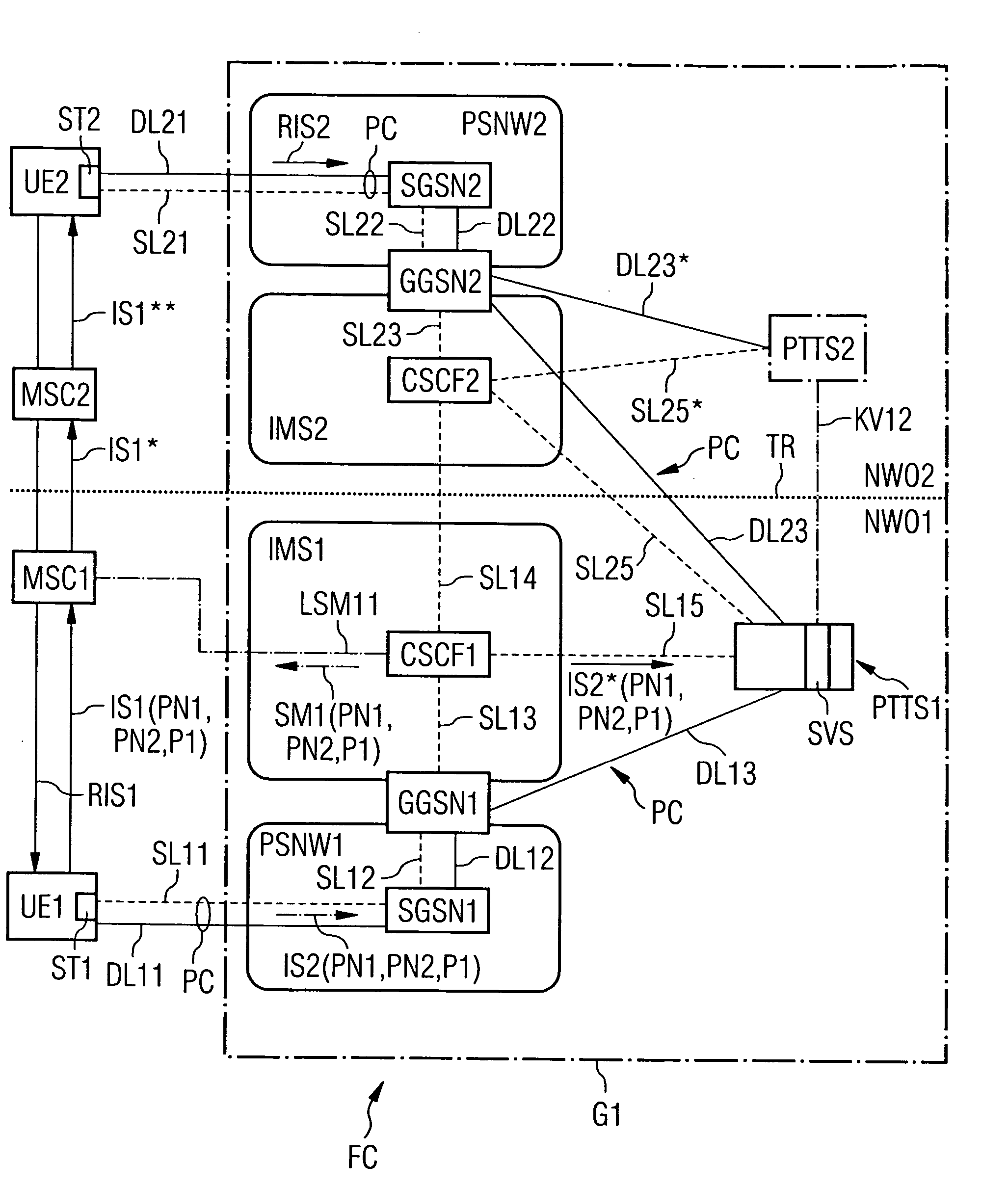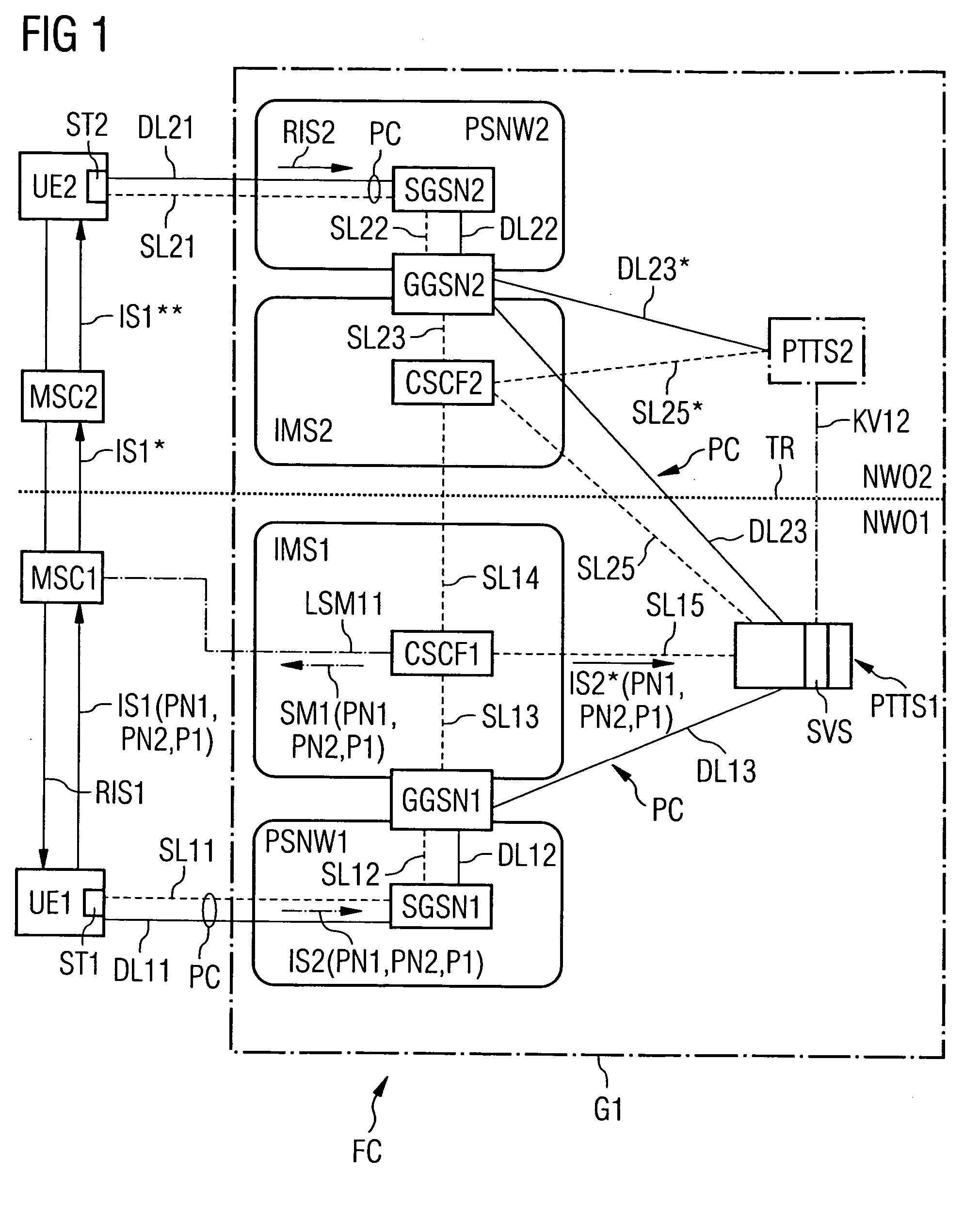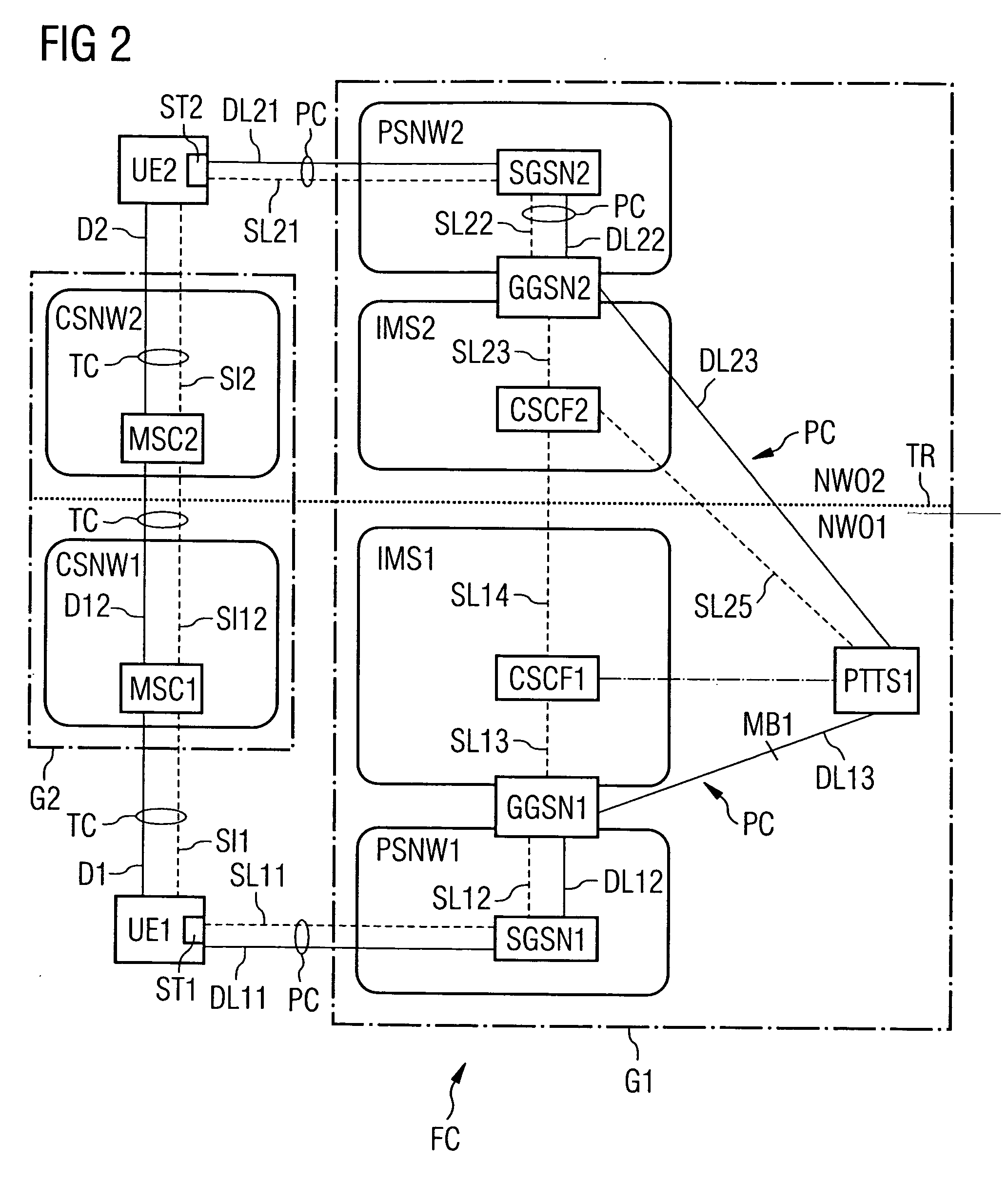Method for changing between a packet-oriented PTT session and a circuit-oriented telephone connection between at least two radio communication appliances, associated radio communication appliance, network component and radio communication system
a packet-oriented ptt and circuit-oriented technology, applied in the field of packet-oriented ptt sessions and circuit-oriented telephone connections between at least two radio communication appliances, associated radio communication appliances, network components and radio communication systems, can solve the problems of corresponding resultant cost, inability to send or deliver their own voice messages using the ptt server, and too complicated and time-consuming
- Summary
- Abstract
- Description
- Claims
- Application Information
AI Technical Summary
Benefits of technology
Problems solved by technology
Method used
Image
Examples
example 1
FOR THE USER-EQUIPMENT CONTROLLED SOLUTION OF 1.A
[0066] The starting point is a PTT session between the two radio communication appliances UE1, UE2, for which connection setup using the PTT server PTTS1 is denoted by PC in FIG. 1. As the communication between the users of the two radio communication appliances UE1, UE2 turns into a discussion, they wish to change from the PTT session PC to a normal telephone connection TC in line with FIG. 2. To this end, the PTT menu on the respective radio communication appliance provides the “Change to telephony” function, which the user of the first radio communication appliance UE1 selects in the present exemplary embodiment. Within the first radio communication appliance UE1, its PTT application (e.g., a PTT client) then calls up the telephony application (e.g., using the PTT partner's telephone number), in this case using the telephone number of the second radio communication appliance UE2, as a transfer parameter. The first radio communicati...
example 2
FOR THE USER-EQUIPMENT CONTROLLED SOLUTION 1.A
[0068] As an alternative to the telephone call setup at the start of example 1, it is also possible for activation of the “Change to telephony” function in the first radio communication appliance UE1 to be followed by transmission of an “SIP” (Session Initiation Protocol) message to the PTT server PTTS1, which then sends a corresponding SIP message PTTS1 to the second radio communication appliance UE2. This notification signal is shown additionally by a dash-dot line in FIG. 1 and is denoted by IS2. This SIP message contains a request to change to a telephone connection in the PSTN-CS domain. Examples of SIP messages which can be used for this purpose are “reinvite” or “info”, by adding thereto a new header (i.e., a new header field such as “application-change: CS telephony”), and / or by inserting an appropriate SDP (Session Description Protocol) message in the data part or body of the SIP message. It may be expedient for the first radio ...
example 3
FOR THE NETWORK CONTROLLED SOLUTION OF 1.B
[0073] In this case too, the user of the first radio communication appliance UE1 activates the “Change to telephony” function in his PTT menu. The first radio communication appliance UE1 then signals to the PTT server PTTS1 that a change of service from PTT to telephony is wanted. To this end, it transmits the notification signal IS2* (see FIG. 1), specifying its own telephone number PN1 and also the telephone number PN2 of the connected second radio communication appliance UE2, to the PTT server PTTS1. For this notification signal IS2*, the SIP format is preferably used. In the interface diagram shown in FIG. 6, this message bears the label “1: INFO (PN1, PN2)”. To be able to indicate to the second radio communication appliance UE2 the need to change from PTT to telephony, it may be expedient to add to the notification signal IS2 a corresponding header, such as one named “Application-change: CS telephony” and / or to deliver a corresponding S...
PUM
 Login to View More
Login to View More Abstract
Description
Claims
Application Information
 Login to View More
Login to View More - R&D
- Intellectual Property
- Life Sciences
- Materials
- Tech Scout
- Unparalleled Data Quality
- Higher Quality Content
- 60% Fewer Hallucinations
Browse by: Latest US Patents, China's latest patents, Technical Efficacy Thesaurus, Application Domain, Technology Topic, Popular Technical Reports.
© 2025 PatSnap. All rights reserved.Legal|Privacy policy|Modern Slavery Act Transparency Statement|Sitemap|About US| Contact US: help@patsnap.com



